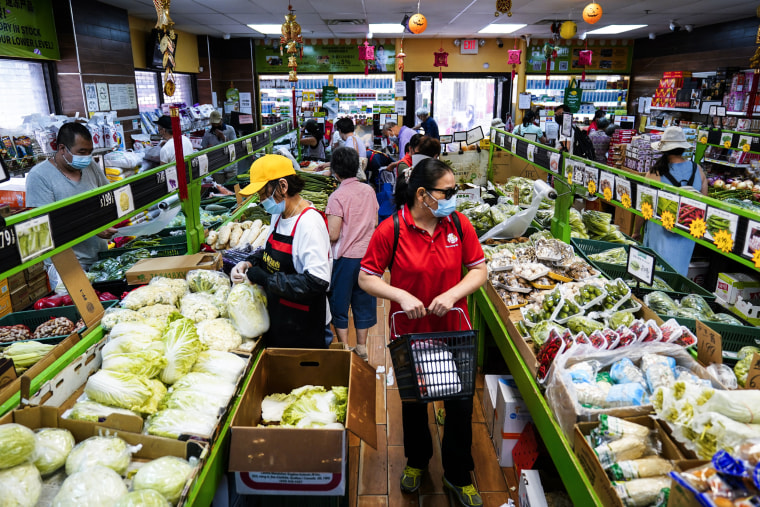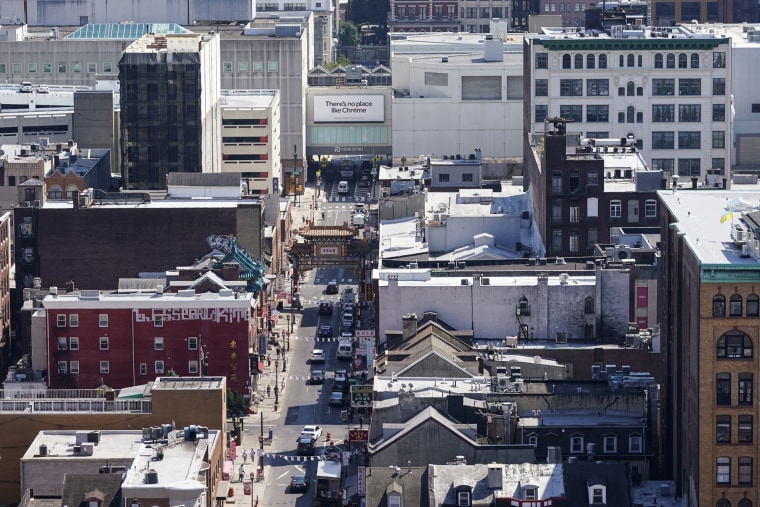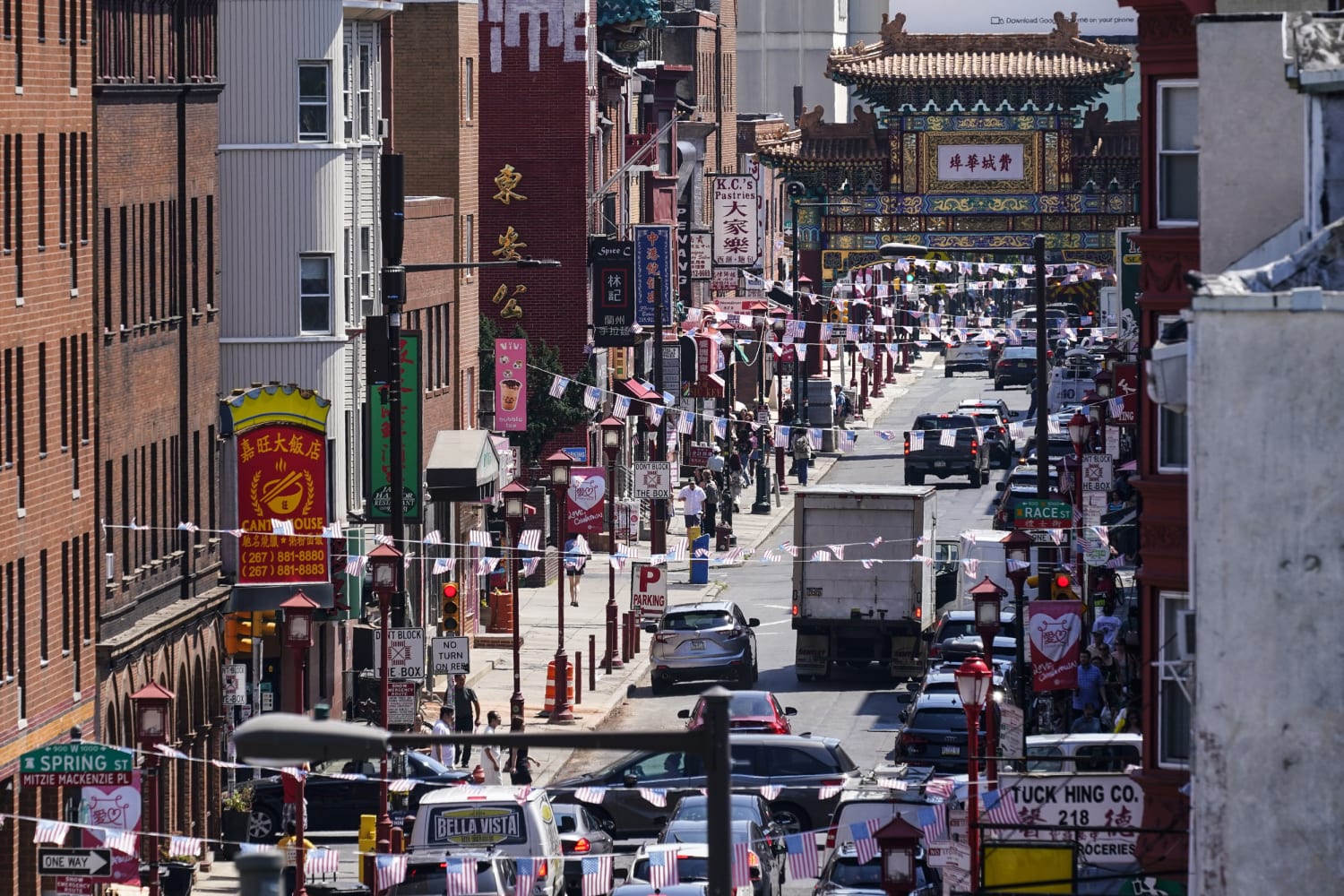Xu Lin, a restaurant owner, said that when he immigrated to the U.S. with his family as a teen, Philadelphia’s Chinatown provided them with jobs and housing. And today, he says, it continues to be a refuge for his family and other immigrants trying to put down roots in the city.
“There was a lot of racism. There was a lot of violence,” Lin said. “But we know that Chinatown is a home, somewhere that’s safe. We can be who we are. I can be who I am. I can speak the language. I can look how I look and be OK.”
But Lin said that after the Philadelphia 76ers unexpectedly announced their plan to build a sports arena adjacent to the neighborhood, he was worried that the safe space might erode. He is one of many Chinatown community members, business owners and organizations that formed a coalition to speak out against the proposal, which they say was developed without their input.
Critics say the project threatens to gentrify the enclave, bringing economic pressures to the community and negatively affecting the surrounding environment long-term. Frustrated residents add that they have repeatedly had to fend off similar projects that failed to include their voices. And given the financial strain the area has had to shoulder due to the coronavirus pandemic and the subsequent waning of the economy, some worry that the arena could serve as a final tipping point.
“It feels very insulting to the community to not be consulted before they make a huge public announcement,” said Lin, whose restaurant, Bubble Fish, is a few blocks from the proposed site. “Every few years, somebody wants to dump a big project like that in our community that threatens our existence. We are pretty tired of it.”

David Adelman, the entrepreneur who’s leading the project for the team, claimed that in his eyes, the proposal marks the “start of the process.”
“I guess we’re splitting hairs here, because, to me, this is just the beginning,” Adelman said. “This is a nine-year project. I’m not here to rush anyone. Almost each day since we’ve announced, we’ve had a meeting with a different group within the community.”
The coalition, of which Lin is a part, convened shortly before the proposal was officially announced in late July, after members heard of the news through word of mouth. The privately funded $1.3 billion arena, named “76 Place,” is proposed to be built on the edge of the Fashion District, neighboring Chinatown. In addition to the potential arena, the team also unveiled the formation of 76Devcorp, a development company helmed by Adelman that is spearheading the project.
“It would have a significant impact on this community and yet no one from the 76ers has reached out to engage or ask the opinions of any of the community members who came together in the coalition’s first meeting,” the coalition said in a statement about the development company.
A spokesperson for Mayor Jim Kenney said that it was “exciting” to hear about the arena proposal. They added that they are “looking forward” to the development team’s community engagement process. However, City Council member Helen Gym, whom the 76ers said they had contacted for input about the project, said she was given less than 24 hours’ notice before the proposal was announced.
“They would be wise to be in concert with Chinatown and to actually have Chinatown drive the project,” Gym said. “Not the other way around.”

Adelman said the company didn’t reach out earlier because there are “multiple constituencies” in Chinatown and because it “wouldn’t have been practical to be able to coordinate all the group meetings” while maintaining confidentiality. He also said he had wanted to wait until the website and other materials were translated into Chinese.
“All the translations weren’t even done until the day when we started meeting, and we just wanted to be properly prepared to be able to engage the community, really, in an easy way. It wasn’t done out of disrespect,” he said.
In response to concerns about gentrification, Adelman said that the company is repurposing an area beside Chinatown and that it is “not looking to do anything to displace any business or displace any resident.”
But Fariha Khan, a co-director of the Asian American Studies Program at the University of Pennsylvania, said that historically, large development projects have far-reaching and long-term effects on the neighborhoods around them. A sports arena, she said, could prompt outsiders to see opportunity in the area. Bars and restaurants, for example, could begin to move in.
Already, discussions around such possibilities have begun, Lin said. A majority of his customer base is made up of Chinatown residents or Asian Americans who seek services related to their culture. The influx of outsiders due to the arena would only drive his loyal patrons out. The stress of the pandemic has already led several business owners to list their shops for sale or to shut down altogether. And Lin said that with the added pressure from an arena, “we won’t survive.”

“For small businesses like us, we are already struggling with the very high rent we are paying,” he said. “And we all know arenas with their sports teams, they build their own restaurants, they have their own bars. They’re within their structure. They will not bring additional business to our community.”
Khan emphasized that the financial strain is only part of the issue. The environmental impact looms large. She said the city has too often seen Chinatown as a space of consumerism and commodities, rather than a neighborhood that serves as a home to families raising their children and seniors socializing with one another.
The community has little green space and areas for families to congregate. An arena could flood the already-congested neighborhood with more traffic and crowds that aren’t helpful additions to a neighborhood with schools and a senior center, she said. Lin similarly said an arena could bring a deluge of rowdy spectators.
“People have to deal with thousands of people on the street after the game. It does not feel safe, especially after people have a few drinks,” Lin said.
Gym said community members have repeatedly had to fight projects moving into the neighborhood in the past. In 2000, Chinatown residents protested a proposed stadium for the city’s major-league baseball team, the Phillies. The facility was kept out of the community’s borders, and since then, Gym said, a Folk Arts-Cultural Treasures Charter School has been built on the site for children in the community.
A church also expanded to serve hundreds of the area’s congregants, she said. In 2009, the community found itself once again beating back a proposed casino, as well.
“There’s no question that kind of town’s history reflects decades of a community fighting tooth and nail for its own survival,” Gym said.
Lin said that while the efforts to keep developers out were successful, significant amounts of land have been compromised by other projects. For the reconstruction of the Vine Street Expressway in 1989, the city initially planned to demolish a community church. While the neighborhood managed to save the church, the expressway ended up cutting through Chinatown, dividing it into north and south parts. Both Gym and Lin also brought up that the construction of a convention center led to the destruction of homes for about 200 families.
Community members say they look at other U.S. Chinatowns that have dealt with similar developments as foreshadowing of their own potential outcome. A basketball arena, now known as Capital One Arena, moved into Washington, D.C.’s Chinatown in 1997. While the area’s Chinese population was once 3,000 at its peak, the development contributed to gentrification, leaving just about 300 in the enclave. Elders in Seattle’s Chinatown-International District are also being priced out of their neighborhood by high-rises, sports stadiums and transit hubs in the area.
“That’s what happened to them. We see that and we know it’s not going to be good for us,” Lin said. “They don’t care about the Asian community there. They care about profits.”
Gym said that Philadelphia’s Chinatown has grown and that in many cases it has proven that with input from residents and business owners, it can expand in a way that would preserve the vital community. Khan said the projects that haven’t included community voices have led to irreparable damage. And now it’s up to the development company to be receptive.
“The 76ers should learn about the community in which they want to be a part of,” Gym said. “We’re very clear that they should start by listening to what the community’s plans are for growth, for development and expansion and its concerns around affordability and housing.”
Source: | This article originally belongs to Nbcnews.com









